The distribution of maternity services across rural and remote Australia: does it reflect population need?
- PMID: 28231830
- PMCID: PMC5324256
- DOI: 10.1186/s12913-017-2084-8
The distribution of maternity services across rural and remote Australia: does it reflect population need?
Abstract
Background: Australia has a universal health care system and a comprehensive safety net. Despite this, outcomes for Australians living in rural and remote areas are worse than those living in cities. This study will examine the current state of equity of access to birthing services for women living in small communities in rural and remote Australia from a population perspective and investigates whether services are distributed according to need.
Methods: Health facilities in Australia were identified and a service catchment was determined around each using a one-hour road travel time from that facility. Catchment exclusions: metropolitan areas, populations above 25,000 or below 1,000, and a non-birthing facility within the catchment of one with birthing. Catchments were attributed with population-based characteristics representing need: population size, births, demographic factors, socio-economic status, and a proxy for isolation - the time to the nearest facility providing a caesarean section (C-section). Facilities were dichotomised by service level - those providing birthing services (birthing) or not (no birthing). Birthing services were then divided by C-section provision (C-section vs no C-section birthing). Analysis used two-stage univariable and multivariable logistic regression.
Results: There were 259 health facilities identified after exclusions. Comparing services with birthing to no birthing, a population is more likely to have a birthing service if they have more births, (adjusted Odds Ratio (aOR): 1.50 for every 10 births, 95% Confidence Interval (CI) [1.33-1.69]), and a service offering C-sections 1 to 2 h drive away (aOR: 28.7, 95% CI [5.59-148]). Comparing the birthing services categorised by C-section vs no C-section, the likelihood of a facility having a C-section was again positively associated with increasing catchment births and with travel time to another service offering C-sections. Both models demonstrated significant associations with jurisdiction but not socio-economic status.
Conclusions: Our investigation of current birthing services in rural and remote Australia identified disparities in their distribution. Population factors relating to vulnerability and isolation did not increase the likelihood of a local birthing facility, and very remote communities were less likely to have any service. In addition, services are influenced by jurisdictions.
Keywords: Catchment area (health); Geographic information systems; Health services research; Healthcare disparities; Maternity Hospitals; Rural health services.
Figures
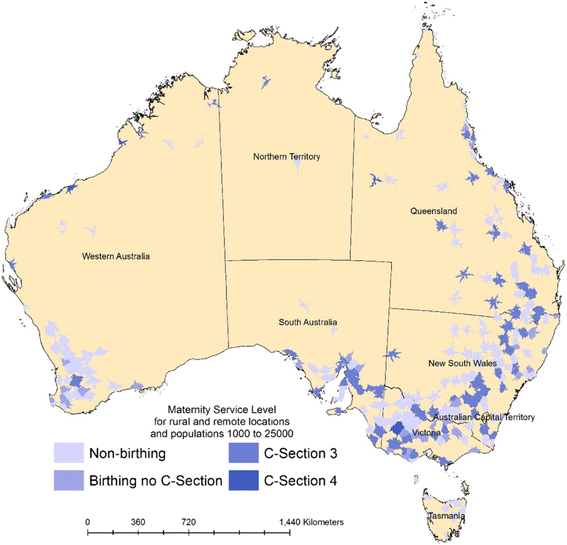
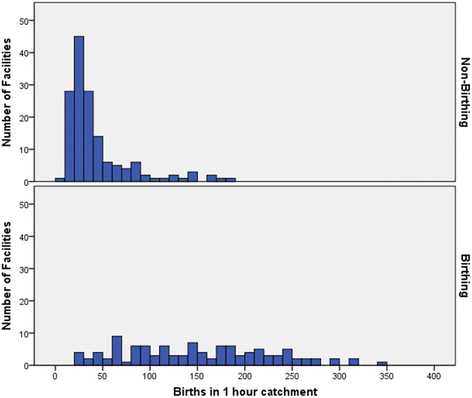
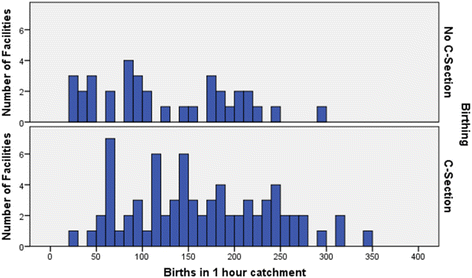
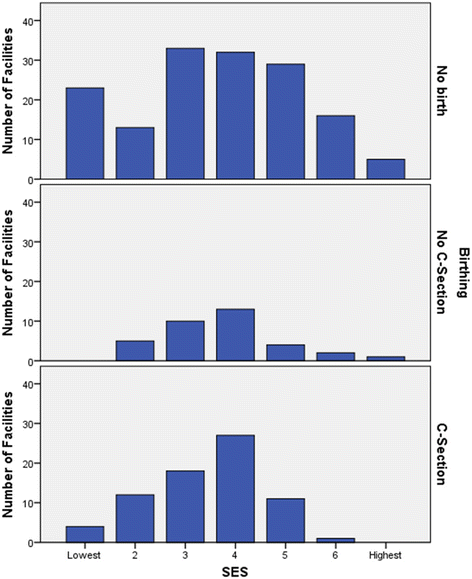

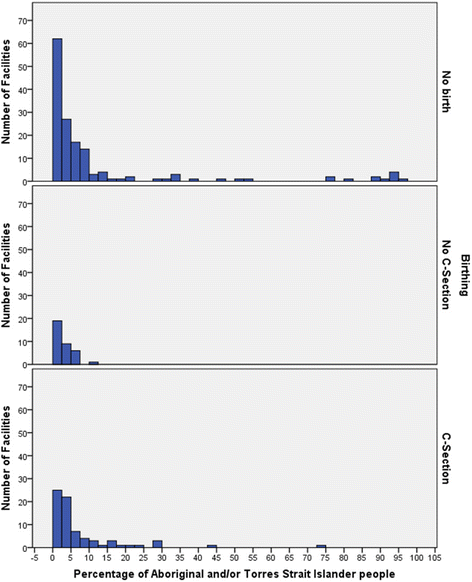
Similar articles
-
Reconceptualising risk: Perceptions of risk in rural and remote maternity service planning.Midwifery. 2016 Jul;38:63-70. doi: 10.1016/j.midw.2016.04.007. Epub 2016 Apr 22. Midwifery. 2016. PMID: 27162166
-
A review of rural and remote health service indexes: are they relevant for the development of an Australian rural birth index?BMC Health Serv Res. 2014 Dec 10;14:548. doi: 10.1186/s12913-014-0548-7. BMC Health Serv Res. 2014. PMID: 25491346 Free PMC article. Review.
-
Primary Maternity Units in rural and remote Australia: Results of a national survey.Midwifery. 2016 Sep;40:1-9. doi: 10.1016/j.midw.2016.05.004. Epub 2016 May 17. Midwifery. 2016. PMID: 27428092
-
The development of a caseload midwifery service in rural Australia.Women Birth. 2017 Aug;30(4):291-297. doi: 10.1016/j.wombi.2016.11.010. Epub 2016 Dec 5. Women Birth. 2017. PMID: 27931780
-
A systematic integrative review examining the impact of Australian rural and remote maternity unit closures.Midwifery. 2021 Dec;103:103094. doi: 10.1016/j.midw.2021.103094. Epub 2021 Jul 14. Midwifery. 2021. PMID: 34329966
Cited by
-
Effectiveness and cost-effectiveness of an electronic mindfulness-based intervention to improve maternal mental health in the peripartum: study protocol for a randomised controlled trial.Trials. 2023 Nov 23;24(1):747. doi: 10.1186/s13063-023-07746-7. Trials. 2023. PMID: 37996896 Free PMC article.
-
Born before arrival in NSW, Australia (2000-2011): a linked population data study of incidence, location, associated factors and maternal and neonatal outcomes.BMJ Open. 2018 Mar 14;8(3):e019328. doi: 10.1136/bmjopen-2017-019328. BMJ Open. 2018. PMID: 29540412 Free PMC article.
-
What are the costs associated with child and maternal healthcare within Australia? A study protocol for the use of data linkage to identify health service use, and health system and patient costs.BMJ Open. 2018 Feb 6;8(2):e017816. doi: 10.1136/bmjopen-2017-017816. BMJ Open. 2018. PMID: 29437751 Free PMC article.
-
The application of spatial measures to analyse health service accessibility in Australia: a systematic review and recommendations for future practice.BMC Health Serv Res. 2023 Apr 1;23(1):330. doi: 10.1186/s12913-023-09342-6. BMC Health Serv Res. 2023. PMID: 37005659 Free PMC article.
-
Opti'care protocol: a randomised control trial to evaluate the impact of a mobile antenatal care clinic in isolated rural areas on prenatal follow-up.BMJ Open. 2023 Feb 16;13(2):e060337. doi: 10.1136/bmjopen-2021-060337. BMJ Open. 2023. PMID: 36797021 Free PMC article.
References
-
- World Health Organisation. Health Systems Equity WHO 2016. (cited March 2015). Available from: www.who.int/healthsystems/topics/equity/en/. Accessed Mar 2015.
-
- Acheson LS, Harris SE, Zyzanski SJ. Patient selection and outcomes for out-of-hospital births in one family practice. J Fam Pract. 1990;31(2):128–36. - PubMed
-
- Commonwealth of Australia Department of the Prime Minister and Cabinet . Closing the Gap Prime Ministers Report 2016. Canberra: Australian Government; 2016.
-
- Standing Council on Health . National Strategic Framework for Rural and Remote Health. Canberra: Australian Government; 2011.
-
- Australian Bureau of Statistics . Year Book Australia, 2012. Cat. no. 1301.0. Canberra: ABS; 2012.
MeSH terms
LinkOut - more resources
Full Text Sources
Other Literature Sources
Medical

